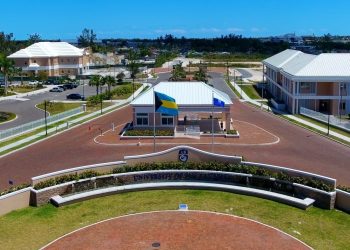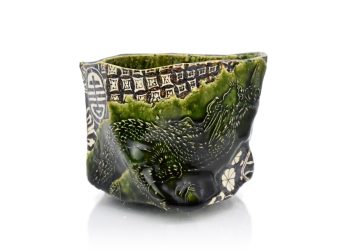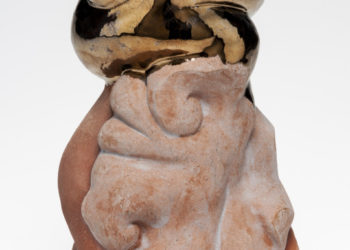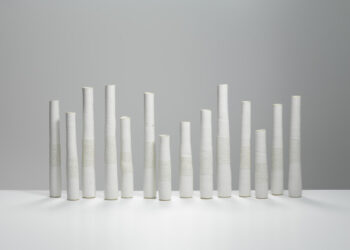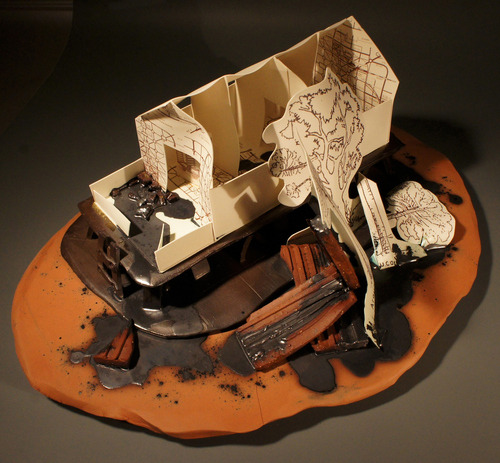
Territorios Conmovidos / Museo de Arte Contemporáneo Latinoamericano MACLA, La Plata, Argentina
May 15 – June 29, 2014
Curated by Lucía Savloff.
The exhibition was born from the sensations that were aroused to a group of artists from La Plata after the perception of what happened during the terrible flood that hit their city last April 2nd of 2013. The artworks of Marcela Cabutti, Mariela Cantú, Gabriel Fino, Graciela Olio and Paula Massarutti display a diverse set of poetics that allows us to think about how the construction of images and artistic devices participates in the process of building a collective memory.
Certain circumstances constitute an event to the extent that causes a deviation in the course of our everyday experience. Natural or social tectonic movements displace the foundations on which we build us. The unpredictable breaks, hits, and then opens, letting us see what was below that which has been moved. The flood brought our attention to what we usually don´t look, putting our fragility in public, and revealing that the way we live, build and socially act modifies the territory we inhabit. The artworks in this exhibition do not try to “represent” what happened. The artists conceive the practice of memory from the field of poetry, creating works and devices that function as meeting spaces that enables dialogues unknown a priori. As blocks of sensations or resonance boxes, the artworks create meeting infrastructures and invite to build from its empty spaces. If the disruptive experience operates as a large gap in our symbolic order, the poetic has the ability to register, give presence, or make visible that which escapes in our attempt to narrate what happened.
Graciela Olio builds small houses with porcelain planes, which cuts and splices together. The house, symbol of the cosmos, is the materialization of our attempt to protect ourselves. But her houses are precarious, sometimes without ceiling or a wall, shelters that rather than creating an interior space, makes themselves visibles. The house crossed by the river has to be one of the most terrifying images. Then comes the adjusting, things acquire a new order, some get lost, others deteriorate. How to move on? The question translates into an impulse to work with what we have, what is left, the remains.
Worlds are constructed from pre-existing worlds, and in that way to make is to remake says Nelson Goodman. Olio takes some pieces of his series Home and Mil Ladrillos that in After the Storm, are crossed by a transformation processes. She intervenes in her ceramic pieces, testing operations that multiply the work of the unpredictable in its forms. Her works become a testing ground, where she experiments encounters with the possible. Putting back in the process something that was finished entails working with error, with failures. Putting back in the kiln some ceramic pieces, reinforced the deconstructive the process of the forms, to the point where some could no longer stay up. Olio built for them small platforms, supports that served as bases, and became palafittes, structures that rise the houses above the water level in coastal areas or rivers. The support structure becomes a metaphor for the idea of care, of guard of the other. What political infrastructure of affection, encounter and care must we build to create strategies that allow us to survive in this complex and unpredictable territory? How to rethink lifestyles, work, organization and collaboration to create sustainable ways of life? How to coordinate actions of citizen participation in the management of the common, the territory?
Paula Massarutti delves into the testing of social bonds that implied the emergence of collective strategies to respond the abandonment during the flood. The forms of solidarity and energetic presence of the other, in rescue, shelter and hospitality actions. Starting from a dialogue with the neighbors that live in the adjoining blocks to her house, she creates a fictional space that asks: What are we willing to compromise with the other? Her project imagines the possibility of elaborating an act of agreement or contract between neighbors, which materializes the commitment to mutual aid in case a new catastrophe occurs. Tensioning the boundaries between fiction and the real, the project transits the space between the spontaneous and anonymous solidarity and the will to build a sustained commitment.
Mariela Cantú overlaps images of the day after the flood, with fragments of a poetic discourse that relates the steps to oblivion after a breakup and audios of old argentine news that talk about the floods in the territory of the province of Buenos Aires. History repeats itself? Cantú intersects the plans for the personal and intimate memory, with those of the great social tragedies. Is it just a matter of scale? Intimate garbage, exiled objects, piles of stuff that become portraits of an unknown other. What images are built in the disordered accumulation of belongings from a certain person when they are devoid of any value? Cantú explores the process that involves any kind of mourning, wondering about intricate work of memory construction, with a critical eye towards the dimension of oblivion.
Gabriel Fino creates images of the storm, of the chaos-seed, of a transformed landscape in which the structures and boundaries dissolve. His work proceeds by accumulation of layers, and densities of meaning. Produced with infinite patience, it requires from the viewer a similar attitude, an attentive gaze, looking below, in the detail, in the fragment, into the interstices, beyond the delicate gesture that gives strength to the whole. Watching between the lines, and get a glimpse what is born of that mix of the whole, of the beautiful and the ugly, of darkness and light; the life emerges in the mixture of the dirt, the rotten and the forgotten. Allow the water to stagnate, to see the birth of the water lily. To see what germinates from chaos.
The installation Mirá cuántos barcos aún navegan! (Look how many ships still sail!) by Marcela Cabutti configures a territory that puts our attention in the moment after. An instant that seems to be frozen but which we perceive as vibrant. The work in its apparent stillness does not cease to deploy images. There is something treasured in the traces of its constructive, manual and methodical process. If art preserves, according to Deleuze, a bloc of sensations, in front of this piece we can´t but shudder at the way in which a work may operate as a memory machine. What connections and memories activates, that make us stand before the constructed landscape? Accidentally we assume the attitude of the character, and we find ourselves contemplating as well. Along the way, we become landscape, we become animal, we become others and suddenly we find ourselves playing. The memory that is activated is one certain way of being in the world, one that resonates in the strings that connect us with the looks of childhood, surprise and wonder at the beauty of the world.
—Lucía Savloff
CONTACT
Tel. 0221.4271843
prensa@macla.com.ar
MACLA (Museo de Arte Contemporáneo Latinoamericano)
MACLA (Latin American Contemporary Art Museum)
Casco Urbano, La Plata (1900)
Buenos Aires Province
Argentina
www.macla.com.ar
Above: Graciela Olio, From the series “After the Storm”, Ceramic assemblage, Keraflex porcelain, stoneware and terracotta, enamel black metal, porcelain laser printed decals, 30 x 35 x 50 cm.
More exhibitions / View the list of ceramic art exhibitions worldwide



